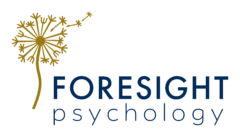 Stress and “busy-ness” has become so ubiquitous in modern society that many of us don’t even recognise the warning signs anymore. Whilst doses of stress can be helpful for increasing motivation and energy, long-term chronic stress and insufficient rest and relaxation can decrease productivity and life-satisfaction and increase anxiety and burnout. It’s time for us to learn to relax and slow down.
Stress and “busy-ness” has become so ubiquitous in modern society that many of us don’t even recognise the warning signs anymore. Whilst doses of stress can be helpful for increasing motivation and energy, long-term chronic stress and insufficient rest and relaxation can decrease productivity and life-satisfaction and increase anxiety and burnout. It’s time for us to learn to relax and slow down.
Relaxation techniques are one of the quickest and simplest tools you can learn to improve your physical and mental health. There is a wide range of available techniques, such as, progressive muscle relaxation, paced-breathing, and paired-word relaxation. Regardless of the technique used, the goal is to help the body produce its natural relaxation response, i.e., decrease breathing rate, lower blood pressure, increase heart rate variability, and improve general wellbeing. These techniques reduce central sympathetic activity (i.e., the stress responses) and promote parasympathetic activity (i.e., relaxation). It’s amazing to think that your body has its own parasympathetic system that is dedicated to helping you feel relaxed and at peace. We just need to learn how to better utilise it!
Progressive Muscle Relaxation (PMR). PMR is one of the best techniques for those new to relaxation. Begin with your toes, tense them gently for 5 seconds and then allow them to relax for 30 seconds. Then tense your feet for 5 seconds and relax for 30 seconds. Repeat this sequence with your ankles and calves and progressively work your way up to your shoulders, neck, and head. Practice this for 15-minutes.
Paced Breathing (PB). This technique involves slowing down your breathing and ultimately lengthening your exhalation so that it is longer than your inhalation. It is a great exercise for beginners and advanced practitioners alike. Start by inhaling for two seconds and exhaling for 4 seconds. As this becomes easier for you, lengthen your exhale to 6 seconds. Practice this for 10-minutes. As you become more skilled with PB, even a few minutes will be sufficient to help you relax when you are short on time.
Paired-Word Relaxation (PWR). This is a second-level relaxation exercise. It is best tried once you are more proficient in PMR or PB. After completing one of the above relaxation exercises, pair a relaxation word with your breath, for instance, as you exhale softly or silently say the word ‘relax’ to yourself. You can use any word that resonates with you, such as, ‘relax’, ‘calm’, ‘peace’, or ‘rest’. This teaches your body to pair the feeling of relaxation with a ‘relaxation word’. Pairing your word can take a fair amount of practice, however, as you improve, you’ll be able to relax even more quickly in future situations by saying your relaxation word along with three slow breaths.
To get the best effects, practice one of these techniques for at least 10-minutes twice a day and note the effect it has on your general well-being. Fitting in even 10-minutes of practice can be challenging with our hectic daily schedules, but these techniques promote higher clarity of thinking and productivity so they will be worth the investment in time. And remember, if you really can’t fit in 10-minutes, some practice is always better than no practice. Relaxation really is one of the simplest tools in your first aid kit, so give yourself a break and start relaxing today!
Whilst relaxation techniques are generally considered safe for healthy people, if you have any queries about the techniques or any health conditions (such as, epilepsy, anxiety disorders, or psychiatric conditions) it is advisable for you to speak with your medical practitioner or health professional before starting any relaxation-based programs.
Summary:
• Relaxation techniques combat the body’s stress response and promote general wellbeing
• There are many ways to relax; the simplest way to get started is to inhale for 2 seconds and exhale for 4 seconds
• Practice for 10-minutes twice a day for best results
To make an appointment, contact Foresight Psychology Ultimo: 02 8380 8855 / info@foresightpsychology.com
